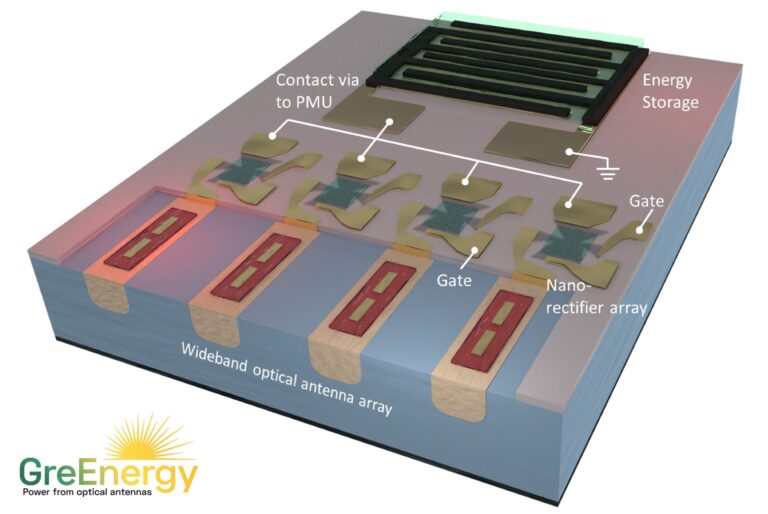Result description
The Multi Physics Tool kit, combining I) ab-initio simulations at atomistic level, II) Monte Carlo simulations at meso-scale level, III) full-wave simulations at continuum level in the same environment is a breakthrough. Moreover, the nanoantenna array design for broadband capturing of sunlight with 70% efficiency and ballistic diodes (around 50% efficiency), based on simulations are beyond the state of the art.
We have achieved lab scale technology validation at the system level, at least in the low THz regime for rectennas, and in the visible regime for nanoantenna structures. The GreEnergy nanoantenna-diode-storage concept could also be of future interest for local harvesting in self-powered units, e.g., for Internet of Things applications.
Addressing target audiences and expressing needs
- Help in technical expertise
- Collaboration
- Fellowship to advance my/our research
In this position paper we summarize our achievements and discuss some important aspects and challenges for future advances and realization of energy harvest- ing from solar antennas. The enhancement of the rectification and the impedance matching between nano-antennas and the rectifier stand out as major tasks in the pursuit of research in this field.
- Research and Technology Organisations
- Academia/ Universities
R&D, Technology and Innovation aspects
We have achieved lab scale technology validation at the system level, at least in the low THz regime for rectennas, and in the visible regime for nanoantenna structures. The GreEnergy nanoantenna-diode-storage concept could also be of future interest for local harvesting in self-powered units, e.g., for Internet of Things applications.
Still the challenges related to bringing this technology to useful systems, especially of the optical regime, are enormous. Single components and nanomanufacturing must be further developed, development of materials and materials with dedicated properties is necessary, insertion losses must be reduced, and in particular, the nanoantennas must be perfectly impedance-matched to the rectifiers, to avoid losses. The GreEnergy project has made several important steps forward in this area, even though much research and development remain in the coming decades.

